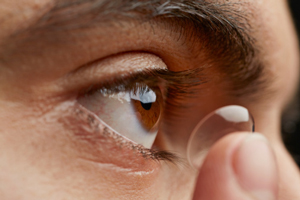Read More About Presbyopia

|
|
|
|
The following sidebars are also part of Vision Monday’s Presbyopia Update. These stories highlight advances in technology for contact lenses, a Q&A with Jack Schaeffer, OD, who is the chief clinical editor of Jobson’s newest publication, Review of Presbyopia and The Aging Eye, and a look at Vuity, the first pharmacological solution for Presbyopia.
Advances in Multifocal Contact Lens Technologies
It seems that nearly every year, contact lens manufacturers are trying to innovate and release new products to market, and this year is no different. Many of the products that have either recently launched or that are soon-to-launch are targeted at the growing presbyopic population. Multifocal optics are being introduced to popular modern contact lens materials and completely new multifocal optic designs have been released as well. This article will discuss the newest contact lens technologies from the major manufacturers aimed at tackling one of the more challenging fits—the presbyopic patient. Read More
Presbyopia Management In-Depth
| 
|
| Jack Schaeffer, OD
| | |
|
Jobson recently launched a new online journal called Review of Presbyopia and The Aging Eye. In this Q&A, Vision Monday asked the journal’s clinical editor, noted optometrist and educator Jack Schaeffer, OD, FAAO, and chief clinical editor of the publication, to talk about the journal’s intent and scope. Read More
Vuity: The First Pharmacological Presbyopia Treatment
Up to now, presbyopia treatment has almost always involved the use of a lens, with laser surgery being the one exception. But in what can only be described as a major breakthrough, a new type of treatment has arrived in the form of a prescription medication—Vuity, which was developed by Allergan. Vuity, of course, is not a “cure” for presbyopia, but it can reduce a patient’s need for reading glasses or multifocal lenses. It does this by reducing pupil size, increasing depth of focus and improving near vision while not affecting distance vision. Read More
|